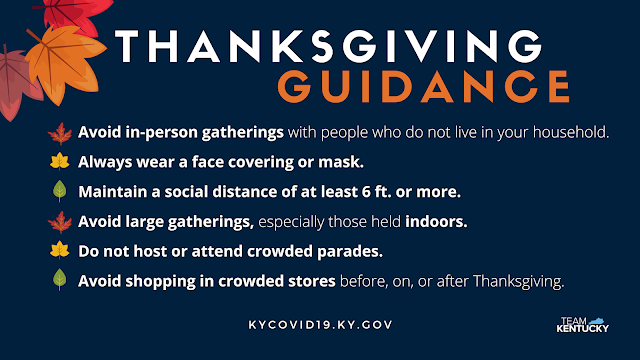Resnick poses questions that offer options to help reduce the risk of spreading the virus, with the recommendation to initiate several of these strategies at the same time, instead of just one. Here are his questions, and answers; in some cases, you will have to provide your own answers:
- Can the holiday be held remotely? “Celebrating virtually or with members of your own household (who are consistently taking measures to reduce the spread of covid-19) poses the lowest risk for spread,” says the Centers for Disease Control and Prevention Thanksgiving guidance.
- Can Thanksgiving be held outdoors? Resnick notes that while an outdoor gathering is far safer than indoor one, it’s important to remember that this strategy isn’t foolproof, and people still need to socially distance and wear a mask.
- Can it be a very small gathering? Know this, he writes: The more people you include, the more dangerous it will be.
- If it’s indoors, can it be well ventilated? Open windows, use fans in some windows to remove old air and in others to introduce new air. Run a HEPA air purifier is you have one. Still, he writes, “We can’t ventilate and air-purify our way out of the need to wear masks, reduce occupancy in indoor spaces and physically distance.”
- Can it be quick? Yes, and the longer you spend with an infected person, the more likely the virus is to be transmitted.
- Does there really need to be food? If the goal is to bring family together, can you perhaps have Thanksgiving without a sit-down meal that necessitates the removal of masks and encourages heavy mouth-breathing activities like shouting, he asks.
- Can guests quarantine beforehand? And maybe afterward, Resnick adds.
- Will vulnerable people be in attendance? Consider excluding those at high risk, such as older people and those with underlying conditions like diabetes and heart disease.
- Can the number of people traveling from hot-spot regions be reduced?
- Is everyone attending on the same page in terms of masking and personal risk? For example, families should ask one another, “How often do you wear a mask, and where?”
- Is everyone in attendance willing to be transparent and honest if they do get sick? Resnick writes, “It’s how we can prevent an outbreak in one family from becoming a huge cluster.”
And there’s another question that some are asking: How about we gather after we all get tested? That may sound like a good idea, but it has too many pitfalls to rely on, Christie Aschwanden writes for Wired.
“As a means of eliminating risk in the midst of a pandemic, the everyone-has-gotten-tested method is utterly absurd,” writes Aschwanden, an award-winning science journalist. “A negative test doesn’t guarantee that anyone is covid-free, and it’s never license to let down your guard. You might, for instance, contract the virus in the interim between being tested and receiving your results, or between getting your results and seeing your friends and family. (The testing site itself could even be where that happens.)
“The tests are not 100 percent accurate. In practice, their error rates may be even higher than the chance that you’re infected in the first place. The probability that you’ll receive a wrong result on any medical test depends not just on the test’s innate accuracy but on your baseline risk. Even a very good test will turn out more false positives than real ones if you go in as someone who isn’t likely to have the disease. Conversely, getting a negative result won’t give you that much information you didn’t have before. It might only increase your confidence at the margins, say from 95 to 98 percent, that you’re not already sick.”

